-
Senior Member
registered user
I'm learning that Win7 may have a capability itself like VirtualBox,
and that VirtualBox uses an M$ format to do its thing:
Wikipedia says:
"Third-party products also use VHD file format. VirtualBox, part of
Sun xVM line of Sun Microsystems supports VHD in versions 2 and
later." Where VHD was earlier described as Virtual Hard Drive,
a Microsoft-acquired format.
It wasn't clear if Win7 Home Premium would have a VHD capability;
maybe only an Enterprise/Server level of Win7?
And I found this:
http://www.3dhomejoe.info/jsite/uploads/vhd.pdf
And I note I can display a Microsoft Management Console (MMC) that
looks like the pdf examples.
The MMC on my Home Premium Win7 looks like it might be capable of
doing a lot of manipulation, including formatting to fat or ntfs. Not clear
what the implication is of some other formatting, say ext or reiser.
I hope this is converging toward an accommodation of Werner's re-
mastering, Capricorny's poor-man's install and my up-till-now
unused ntsf capability. This still feels like re-partioning by another name,
and diddling with the Win7 install is problematic.
-
Senior Member
registered user

Originally Posted by
utu

@ Capricorny
You force me to reveal yet another layer of my ignorance.
I think I've done poor man's installs to linux-formatted partitions,
but I thought the rule was NEVER to write linux stuff to ntfs.
Virtual box didn't seem like a violation of that rule.
Kindly point me to some reading material.
Re-formatting was my initial interest; VirtualBox is interesting,
but I can come back to that.
No, I don't think you are ignorant! Conventional wisdom is don't write to NTFS, and for general,unrestricted use, I think that is still the safest advice. But poor man's installs are somewhat simpler than the general case, as just a few files are written, and except for knoppix-data.img, the rest are, mostly, read-only.
I have heard few reports of problems using NTFS this way, and I did my first poor man's install to NTFS/Win7 a few weeks ago - I try to avoid it, but not at any cost. Seems to work very well, and the same method that is used for creating the persistent image can be used for creating a larger volume for working - so you can effectively have two (or more) Linux partitions residing on an NTFS file system.
Again, I would try to minimize writing to NTFS, but for setting up a workplace for remastering, it should be ok. For permanent storage, I would have tried to shrink NTFS to make room for a native Linux partition, but I have no grave objections to using NTFS for a poor man's install - provided there are good back-up routines in place. After all, we only have to take care of one single file, and if the "install" gets corrupted, we just clean up and copy the files to disk once more.
Oh, and I should add: From Win7 viewpoint, cleaning up after such an install is just a matter of normal deletion of a few files. There is a small element of unsafety in that NTFS is mounted rw at /mnt-system - which means you have "automatic" access to all Windows files - also for corrupting them. But as long as you stay within /UNIONFS, there is not much of a danger AFAIK.
Last edited by Capricorny; 07-11-2011 at 12:04 AM.
-
Senior Member
registered user
@ Capricorny
Please confirm I have this right.
Your Virtual Hard Drives are ntfs and not linux formatted?
Are you using M$ MMC to set these up?
Also is your Windows a Win7 Home Premium, or something grander?
Thanks.
Last edited by utu; 07-11-2011 at 12:19 AM.
-
Senior Member
registered user

Originally Posted by
utu

@ Capricorny
Please confirm I have this right.
Your Virtual Hard Drives are ntfs and not linux formatted?
Are you using M$ MMC to set these up?
Also is your Windows a Win7 Home Premium or something grander?
Thanks.
As I wrote: The entities residing on NTFS are files. Nothing else, nothing special. So I do nothing at all about them with Windows tools. In fact, I think I haven't booted Windoze for 6+ months. I have it installed because I _may_ need it, not because I use it  For running Windows, I use VMware. Run off the cloop-mounted KNOPPIX file on NTFS, but the virtual machines reside on an ext3 (will probably turn to ext4 soon) partition.
For running Windows, I use VMware. Run off the cloop-mounted KNOPPIX file on NTFS, but the virtual machines reside on an ext3 (will probably turn to ext4 soon) partition.
My version: It's a Home Premium, but I don't think that matters.
But inside some of those NTFS files are Linux file systems - I mostly use ext2/ext3, but that doesn't matter much. And they are loop- or cloop-mounted.
As for VM technology, I have been using VMware workstation for 11 years - and I try to know as little as possible about it, and the alternatives, as long as it just works, and it mostly does. So I don't know about M$ MMC etc, which I think is much newer stuff than VMware.
I can see that it could be somewhat practical to test new Knoppix versions in a VM, but I normally copy new remasterings to USB media in any case, and then I can test run from them.
-
Senior Member
registered user

Originally Posted by
utu

I'm learning that Win7 may have a capability itself like VirtualBox,
and that VirtualBox uses an M$ format to do its thing:
Wikipedia says:
"Third-party products also use VHD file format. VirtualBox, part of
Sun xVM line of Sun Microsystems supports VHD in versions 2 and
later." Where VHD was earlier described as Virtual Hard Drive,
a Microsoft-acquired format.
It wasn't clear if Win7 Home Premium would have a VHD capability;
maybe only an Enterprise/Server level of Win7?
VHD ( virtual harddisk ) and virtual machine (VM) are different thing. Well,
a VM might use VHD, but having VHD only is no where near to having
the capability of VM. It's like you have the wheels it does not mean you
have the car. I am not sure if the Oracle's VM ( virtualbox ) is
able to use M$ VHD, but that's the last thing I need to worry about. When
you create a VM, the VM creates VHD automatically.
-
Senior Member
registered user

Originally Posted by
Capricorny

For running Windows, I use VMware. Run off the cloop-mounted KNOPPIX file on NTFS, but the virtual machines reside on an ext3 (will probably turn to ext4 soon) partition.
VMWare on Linux can't have the virtual storage stored on NTFS. Somehow the VMware has serious performance problem with fuse driver.
-
Senior Member
registered user

Originally Posted by
Capricorny

As for VM technology, I have been using VMware workstation for 11 years - and I try to know as little as possible about it, and the alternatives, as long as it just works, and it mostly does.
On my Knoppix system I have 3 different implementations of VMs :-
1. Oracle VirtualBox
2. VMware
3. Qemu
VMware and Virtualbox are nice to use because they are provided with GUI.
Some of my guest operating systems are in VMWare, and some are in VirtualBox.
I don't really know the pros and cons of VMware and virtualbox but virtualbox
is 'vde' aware, so when it comes to simulation of interconnecting multiple VMs,
it is more friendly. I have a setup where I interconnect 5 or 6 Virtualbox/
Qemu VMs networking with each other on my host Knoppix system.
Virtualbox and Qemu are in-conflict with one another, ie you can't run
virtualbox and qemu at the same time.
VMware and Virtualbox both are using their proprietary virtual harddisk, it
makes it hard to do file system check and fix file system errors. When I use
Qemu, I use native raw format, so in case of errors, I could fsck/fdisk the
harddisk using native OS (Linux ) tools.
-
Senior Member
registered user
I can report that I have tried VMWare Player at Capricorny's suggestion,
and that it cures ALL the complaints I have previously raised against VirtualBox.
'Player is free, as in 'Box, so I can afford it.
That said, I intend to resume trying Werner's re-mastering ideas, replacing
only VirtualBox with VMWare Player.
Any comments on this modification of Werner's procedure?
Last edited by utu; 07-12-2011 at 07:57 PM.
-
... some years ago I also used VMWare; in the meantime I prefer VirtualBox. But for remastering purpose with my scripts there may bee no difference. In both cases you work with a HD installation of Knoppix, no matter whether using a virtual drive within a virtual machine of VMWare or VirtualBox.
Greetings Werner * http://www.wp-schulz.de/knoppix/summary.html
Own Rescue-CD with Knoppix (Knoppix V6.4.4 remaster)
-
Senior Member
registered user
@ Werner
Greetings, Werner.
In regard to your otherwise fine instructions:
The MBR question is ambiguous in regard to the term 'first hard disk'.
I am attempting this on a Win7 host.
Does 'first hard disk' refer to the hardware that the laptop boots into Win7 from or do you mean the virtual system I've just created on the guest machine?
I want to avoid diddling with the MBR on the laptop.
Last edited by utu; 07-14-2011 at 05:50 PM.
 Posting Permissions
Posting Permissions
- You may not post new threads
- You may not post replies
- You may not post attachments
- You may not edit your posts
-
Forum Rules

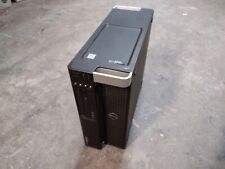
Dell Precision 5810 Workstation Xeon E5-1650 6C 3.5GHz 16GB 500GB Win10 K2200
$115.94

Dell T7810 Workstation 1x E5-2603 v3 16GB RAM Nvidia QUADRO +cables
$120.00
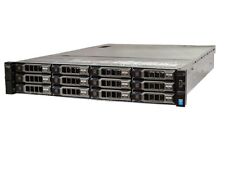
Dell Poweredge R730xd LFF 14-Bay 2U Server | Choose Your CPU & RAM Config
$489.99
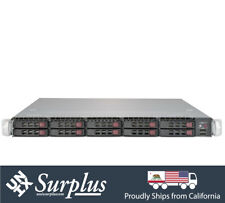
1U Supermicro Server 10 Bay 2x Intel Xeon 3.3Ghz 8C 128GB RAM 240GB SSD 2x 10GBE
$259.00
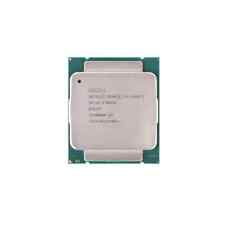
SR1XP Intel Xeon E5-2680 v3 12 Core 30MB 2.5GHz LGA 2011-3 Grade A Processor
$3.87

Genuine Intel Xeon E5-2680V4 2.40Ghz 14-Core 35MB LGA2011 CPU P/N: SR2N7
$14.99

Intel SR1XD Xeon E5-2699V3 2.30Ghz 18-Core Socket 2011 CPU Processor Haswell
$35.00
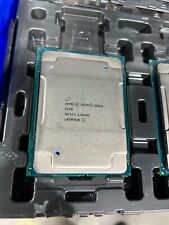
Intel Xeon Gold 6140 SR3AX 2.3GHz 18-Core Processor CPU
$32.79

HP Z440 Workstation 18Cores Xeon E5-2699 V3 128GB 1TB SSD 2TB WIFI WIN11 R5-340X
$309.99
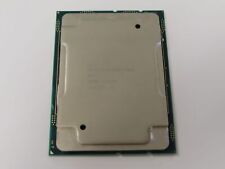
Matched Pair __ Intel Xeon Gold 6152 2.1Ghz 22-Core 140W CPU SR3B4
$204.95



 Reply With Quote
Reply With Quote











